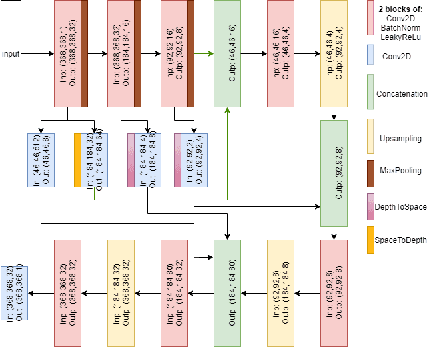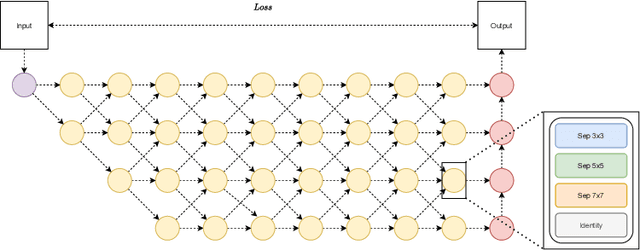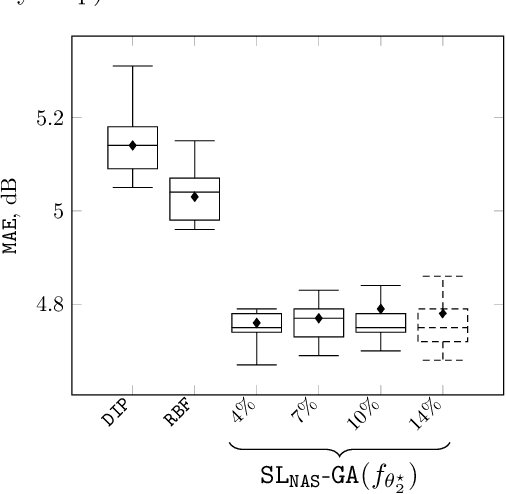Christophe Villien
CEA-LETI
Evaluation of An Indoor Localization Engine
Apr 30, 2024Abstract:Pedestrian Indoor localization based on modalities available in modern smartphones have been widely studied in literature and many of the specific challenges have been addressed. However, very few approaches consider the whole problem and proposed solutions are very often evaluated under very limited scenarios. We propose a fusion engine for localization that makes use of various data provided by a smartphone (Inertial sensors, pressure sensors, Wi-Fi, BLE, GNSS, map etc.) to provide a fused localization that is robust under harsh conditions (poor RSS coverage, device position change etc.). Moreover, our solution has been evaluated for hardware integration and tested over a large database including more than 250 experiments representing different scenarios, showing feasibility of lightweight implementation and good results over various conditions.
A Novel Satellite Selection Algorithm Using LSTM Neural Networks For Single-epoch Localization
Jun 09, 2023



Abstract:This work presents a new approach for detection and exclusion (or de-weighting) of pseudo-range measurements from the Global Navigation Satellite System (GNSS) in order to improve the accuracy of single-epoch positioning, which is an essential prerequisite for maintaining good navigation performance in challenging operating contexts (e.g., under Non-Line of Sight and/or multipath propagation). Beyond the usual preliminary hard decision stage, which can mainly reject obvious outliers, our approach exploits machine learning to optimize the relative contributions from all available satellites feeding the positioning solver. For this, we construct a customized matrix of pseudorange residuals that is used as an input to the proposed longshort term memory neural network (LSTM NN) architecture. The latter is trained to predict several quality indicators that roughly approximate the standard deviations of pseudo-range errors, which are further integrated in the calculation of weights. Our numerical evaluations on both synthetic and real data show that the proposed solution is able to outperform conventional weighting and signal selection strategies from the state-of-theart, while fairly approaching optimal positioning accuracy.
* arXiv admin note: text overlap with arXiv:2306.05319
RNN-Based GNSS Positioning using Satellite Measurement Features and Pseudorange Residuals
Jun 08, 2023Abstract:In the Global Navigation Satellite System (GNSS) context, the growing number of available satellites has lead to many challenges when it comes to choosing the most accurate pseudorange contributions, given the strong impact of biased measurements on positioning accuracy, particularly in single-epoch scenarios. This work leverages the potential of machine learning in predicting link-wise measurement quality factors and, hence, optimize measurement weighting. For this purpose, we use a customized matrix composed of heterogeneous features such as conditional pseudorange residuals and per-link satellite metrics (e.g., carrier-to-noise power density ratio and its empirical statistics, satellite elevation, carrier phase lock time). This matrix is then fed as an input to a recurrent neural network (RNN) (i.e., a long-short term memory (LSTM) network). Our experimental results on real data, obtained from extensive field measurements, demonstrate the high potential of our proposed solution being able to outperform traditional measurements weighting and selection strategies from state-of-the-art.
Deep Learning with Partially Labeled Data for Radio Map Reconstruction
Jun 07, 2023



Abstract:In this paper, we address the problem of Received Signal Strength map reconstruction based on location-dependent radio measurements and utilizing side knowledge about the local region; for example, city plan, terrain height, gateway position. Depending on the quantity of such prior side information, we employ Neural Architecture Search to find an optimized Neural Network model with the best architecture for each of the supposed settings. We demonstrate that using additional side information enhances the final accuracy of the Received Signal Strength map reconstruction on three datasets that correspond to three major cities, particularly in sub-areas near the gateways where larger variations of the average received signal power are typically observed.
Self-Learning for Received Signal Strength Map Reconstruction with Neural Architecture Search
May 17, 2021



Abstract:In this paper, we present a Neural Network (NN) model based on Neural Architecture Search (NAS) and self-learning for received signal strength (RSS) map reconstruction out of sparse single-snapshot input measurements, in the case where data-augmentation by side deterministic simulations cannot be performed. The approach first finds an optimal NN architecture and simultaneously train the deduced model over some ground-truth measurements of a given (RSS) map. These ground-truth measurements along with the predictions of the model over a set of randomly chosen points are then used to train a second NN model having the same architecture. Experimental results show that signal predictions of this second model outperforms non-learning based interpolation state-of-the-art techniques and NN models with no architecture search on five large-scale maps of RSS measurements.
 Add to Chrome
Add to Chrome Add to Firefox
Add to Firefox Add to Edge
Add to Edge